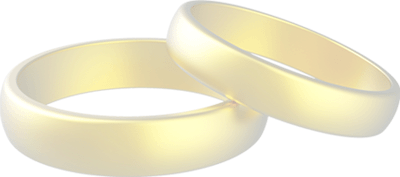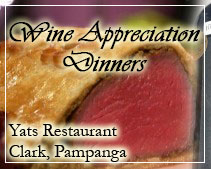The Hydrometer
I know one can make wine purely by chance. At some point in the very distant past, this was done by ancient man. Many times. Grape juice stored in a container began to ferment. When the process ended, the resulting juice was very different than the original juice. Wild yeasts, carried from the skins of the grapes to the juice during pressing, were the agents of change, but ancient man didn’t know that. Nonetheless, through careful observation he worked out a process that usually resulted in fermentation and, eventually, wine. Only in the recent past was the process truly understood, and with that understanding came tools to assist the winemaker. The most important of these, next to the fermentation trap (air lock), is the hydrometer.
The hydrometer is to the winemaker what the compass is to the mariner. The proper use of the hydrometer allows the winemaker to guide his activities precisely from pre-feremted must to final perfection and to discern all the steps in between.
The hydrometer is a simple instrument that measures the weight–or gravity–of a liquid in relation to the weight of water. Because the relation of the gravity to water is specified, the resulting measure is called a specific gravity. A hydrometer will float higher in a heavy liquid, such as one with a quantity of sugar dissolved in it, and lower in a light liquid, such as water or alcohol. In truth, the average winemaker has no interest in the specific gravity of a must per se, but has a very keen interest in the amount of sugar dissolved in it, for yeast converts sugar into carbon dioxide and alcohol. By knowing how much sugar one started with and ended with, one can easily calculate the resulting alcohol.
There are many variants of the hydrometer. Some have only one scale, some two and some three. The typical hydrometer measures three things: specific gravity (S.G.), potential alcohol (P.A.), and sugar.
The specific gravity scale will usually read from 0.990 to 1.120. The S.G. of water is 1.000. If you fill a test jar (a deep chimney-shaped vessel that holds from 1/2 to two cups of juice) with water and float your hydrometer in it, the water surface should rest at the 1.000 mark. As you dissolve sugar in the water, the hydrometer will float higher. One pound of sugar dissolved in one U.S. gallon* of water will float the hydrometer to the 1.046 level.** Some vinters use a shorthand and simply call this level 46. I do not do that. I call it 1.046, as it actually reads. Shorthand can cause mistakes. However, if you use the three digits after the decimal point, use them correctly and say, “a gravity of 46,” not “a specific gravity of 46.”
*One U.S. gallon equals 128 fluid ounces, or 3.7853 liters, or 0.833 Imperial gallons, while one Imperial gallon equals 160 fluid ounces, or 4.5459 liters, or 1.2 U.S. gallons. All liquid measurements specified on this website use U.S. measurements unless otherwise stated. For those who use the Imperial measures or are used to converting to metric from Imperial measures, I apologize for our ancestors for creating this dilemma. Just remember, five U.S. gallons equal four and one-sixth Imperial gallons, and five Imperial gallons equal six U.S. gallons.
**Please note that one pound of sugar dissolved in one gallon of water is not the same as one pound of sugar added to one gallon of water. In the first instance, you have one gallon of liquid. In the second instance, you have one gallon ten fluid ounces of liquid.
Table wines are generally started at an S.G. of 1.090 or higher and fermented to dryness–0.990 to 1.000. Sweeter wines are started at a higher S.G. using a yeast that will die out at predictable point and stabilized at that time and at the desired sweetness to prevent die-hard yeast cells from re-populating the wine, or, more commonly, started at 1.090 or higher, fermented to dryness, stabilized, and sugar added back to the wine to sweeten it.
The 1.090 specific gravity is a rather magical number. It produces an alcohol level of about 12.3%, a level that ensures the wine’s preservation. I usually start at 1.095, or about 13% alcohol, because I know I will lose some volume in racking and add water to make it up, thereby diluting the wine and the percent alcohol by volume. In truth, a hair over 10% alcohol is all that’s required to preserve grape wine. But some fruit wines actually require the 12% level for unrefrigerated preservation, so using 12% as a rule of thumb errs, if at all, on the side of safety.
Sugar can be measured as ounces per gallon or as degrees Balling, or Brix. Ounces per gallon are measured on a numeric scale in which an S.G. of 1.046 equals 16 oz. (one pound) of sugar per U.S. gallon. Brix is measured as a percentage of sugar by which pure water has a Brix of 0 (or 0% sugar), an S.G. of 1.046 equals a Brix of 11.5 (11.5% sugar), and an S.G. of 1.095 equals a Brix of 22.5 (22.5% sugar). If you have a choice and want to simplify your life, buy a hydrometer that measures sugar by ounces per gallon.
There are other scales. The oldest was devised in 1843 by German chemist Karl Balling. While accurate for most needs, it does contain a slight error that was corrected in 1870 by Dr. Adolf F. Brix, whose corrected scale is called the Brix scale. Both give their measures in units of degree, with each degree representing a percent of sugar dissolved in water. Thus, 17 degrees Brix (always capitalized) (1.070 S.G.) is a liquid containing 17% dissolved sugar.
The potential alcohol scale typically reads from 0 to 16%. Using the standard hydrometer, you cannot measure the alcohol in a finished wine. But you can measure the P.A. before the yeast is added and measure it again after fermentation is complete. By simple subtraction, the P.A. lost is the percentage of alcohol in the finished wine.
Accurate alcohol content cannot be calculated using a hydrometer alone because the actual S.G. of pure alcohol is 0.792, not 0.990 as most hydrometers read. However, if you accurately measured your must’s S.G. before yeast was introduced and fermented it to an S.G. of 0.990, racking as required, your calculation should be accurate to 1% — far better than the accuracy of American political polls.
Most hydrometers are calibrated to give correct readings at 59-60 degrees Fahrenheit. Higher temperatures thin the liquid slightly and result in lower readings than you’d get at the correct temperature. At 70 degrees F., the reading will be 0.001 low. To correct it, add 0.001 to the reading. At 77 degrees F., add 0.002. At 84 degrees F., add 0.003. At 95 degrees F., add 0.005. At temperatures above 95 degrees F., you risk killing your yeast and losing your wine. Oh, and for those who have written to tell me the numbers in this paragraph should have a “1″ to the left of the decimal point instead of a “0″, wrong! If you added 1.001 to 1.000 you would get 2.001, clearly wrong.
The following table is calibrated for water, not grape juice. Figures for grape juice would differ slightly, but not appreciably. The table displays specific gravity, the amount of sugar in one gallon to achieve the S.G. reading, the amount of sugar added to one gallon to achieve the S.G. reading (but resulting in more than one gallon liquid), the percentage of sugar in the liquid expressed in Brix, the volumetric increase in a gallon of water if the sugar required to achieve a particular S.G. reading were added to it, and the potential alcohol a specified S.G. will generate if fermented to an S.G. of 1.000.
Specific
Gravity Sugar
in Gal. Sugar
to Gal. Sugar
Brix Volume w/
Sugar Added Potential
Alcohol
1.010
1.015
1.020
1.025
1.030
1.035
1.040
1.045
1.050
1.055
1.060
1.065
1.070
1.075
1.080
1.085
1.090
1.095
1.100
1.105
1.110
1.115
1.120
1.125
1.130
1.135 0 lb. 1.7 oz.
0 lb. 3.4 oz.
0 lb. 5.8 oz.
0 lb. 7.5 oz.
0 lb. 10.0 oz.
0 lb. 12.5 oz.
0 lb. 14.0 oz.
0 lb. 15.8 oz.
1 lb. 1.5 oz.
1 lb. 3.0 oz.
1 lb. 5.0 oz.
1 lb. 6.5 oz.
1 lb. 8.0 oz.
1 lb. 9.8 oz.
1 lb. 11.5 oz.
1 lb. 14.0 oz.
1 lb. 15.6 oz.
2 lb. 1.3 oz.
2 lb. 3.0 oz.
2 lb. 4.6 oz.
2 lb. 6.3 oz.
2 lb. 8.0 oz.
2 lb. 9.6 oz.
2 lb. 11.3 oz.
2 lb. 12.9 oz.
2 lb. 14.6 oz. 0 lb. 2.1 oz.
0 lb.4.2 oz.
0 lb.6.7 oz.
0 lb.8.3 oz.
0 lb.10.8 oz.
0 lb.13.3 oz.
0 lb.15.0 oz.
1 lb. 0.7 oz.
1 lb. 3.3 oz.
1 lb. 4.8 oz.
1 lb. 6.5 oz.
1 lb. 9.0 oz.
1 lb. 11.5 oz.
1 lb. 14.0 oz.
1 lb. 15.6 oz.
2 lb. 2.2 oz.
2 lb. 4.6 oz.
2 lb. 7.2 oz.
2 lb. 9.6 oz.
2 lb. 12.1 oz.
2 lb. 14.8 oz.
3 lb. 1.1 oz.
3 lb. 3.6 oz.
3 lb. 6.1 oz.
3 lb. 8.6 oz.
3 lb. 11.1 oz. 3.8
4.9
6.0
7.1
8.2
9.3
10.4
11.5
12.6
13.7
14.8
15.9
17.0
18.1
19.2
20.3
21.4
22.5
23.6
24.7
25.8
26.9
28.0
29.1
30.2
31.3 1 gal 0.7 oz.
1 gal 2.4 oz.
1 gal 4.0 oz.
1 gal 5.6 oz.
1 gal 6.4 oz.
1 gal 8.0 oz.
1 gal 8.8 oz.
1 gal 10.4 oz.
1 gal 11.2 oz.
1 gal 12.8 oz.
1 gal 13.6 oz.
1 gal 15.2 oz.
1 gal 16.0 oz.
1 gal 17.6 oz.
1 gal 18.4 oz.
1 gal 20.0 oz.
1 gal 21.6 oz.
1 gal 22.4 oz.
1 gal 24.0 oz.
1 gal 25.6 oz.
1 gal 26.4 oz.
1 gal 28.0 oz.
1 gal 29.6 oz.
1 gal 30.4 oz.
1 gal 32.0 oz.
1 gal 33.6 oz. 1.4
2.0
2.7
3.4
4.1
4.8
5.4
6.1
6.8
7.5
8.2
8.8
9.5
10.2
10.9
11.5
12.2
12.9
13.6
14.3
14.9
15.6
16.3
17.0
17.7
18.3
Source: http://winemaking.jackkeller.net/hydrom.asp
Frequently visited resort hotel in Pampanga Angeles City Clark Freeport Zone shares news, articles, suggestions and ideas on matters that might enhance your visit to Subic and Clark Pampanga for vacation and travel, as well as to organize, plan or attend a corporate or social event near Manila.
The best hotels outside Manila in Pampanga and Subic are listed here including a beach resort which is a semi-private establishment located in the central business district near shopping, business, entertainment, airport and other conveniences of Philippines Clark Freeport Zone. This 13 hectare lake beach resort near Manila Philippines is highly recommended for family tourists with children or couples and individuals hoping to relax and enjoy peace and quiet in a laidback American suburban lifestyle.
Adding to the charm and attractiveness of the resorts and hotels in Clark Philippines are certain unique factors including safety, a keen sense of security and privacy that the main zone of Clark Freeport Zone offers. Angeles Philippines, Subic or Manila cannot offer the same sense of security like Clark Philippines.
Pampanga is an important province of the Philippines slated to be the next business and tourism center of the country. Already international traffic prefers the Clark International Airport and tourists find Clark Freeport Zone easier to get around than Manila. Safety, low crime rate, no traffic and low pollution levels all contribute to making Pampanga Angeles City Clark Freeport Zone a preferred destination for local and international tourists.
For information as well as assistance with reservations in hotels and resorts in Pampanga, Clark Philippines, click here to contact HotelClarkPhilippines now
Or call us at
Hotel Clark Philippines
Creekside Road corner of Centennial Road,
Central Business District, Clark Freeport Zone,
Pampanga, Philippines 2023
Tel: (045)599-5949 0917-520-4403 0922-870-5177 ask for Pedro or Rechel
Manila Sales Office
3003C East Tower, Phil Stock Exchange Center,
Exchange Rd Ortigas Metro Manila, Philippines 1605
(632) 637-5019 0917-520-4393 Rea or Chay
http://www.HotelClarkPhilippines.com
Email: Info@ClarkPhilippines.com
Getting to this hotel in Clark Philippines
After entering Clark Freeport from Subic, Manila, Dau and Angeles City, proceed straight along Clark’s main highway MA Roxas, passing Clark’s largest wine shop called Clark Wine Center on your right, continue to bear right making no turns at all, go past Mimosa Leisure Estate on the opposite side of the road, you will hit a major intersection. Go straight and the road becomes Creekside Road. YATS Clearwater Resort and Country Club is on your right just 200m down. Traffic in Clark Philippines is light so it should be quite easy for get to this hotel in Clark Philippines.
YATS Leisure Philippines is a HK-based developer and operator of clubs, resorts and high-class restaurants and wine outlets www.YatsLeisure.com
To inquire with the beach resort hotel in Clark Pampanga visit
http://www.ClearwaterPhilippines.com
For assistance with wedding venues, organizing and planning a wedding reception or to find wedding services and consultants, log on to
www.philippinesweddingvenue.com
To inquire with the highly recommended beach resort hotel in Clark Pampanga visit http://www.ClearwaterPhililippines.com
For more information about Clark, Pampanga, Philippines log on to
http://www.ClarkPhilippines.com
Wine lovers and gourmands looking for good place to eat, fine dining restaurants and family resto bar may want to log on to www.YatsRestaurant.com
In the Freeport zone of Clark, there is a large wine shop that sells excellent vintage wine called Clark Wine Center which offers over 2700 selections of fine wine ranging from p500 to p500,000 a bottle and up. Log on to www. ClarkWineCenter.com for more information.









